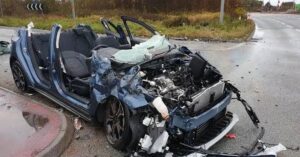Six Deadliest Space Disasters in History
Six Deadliest Space Disasters in History
Space exploration has long been a remarkable feat of human ingenuity and bravery. However it also comes with immense risks. Over the years, several space disasters have resulted in the loss of lives, highlighting the dangers and challenges of space travel. Here are six of the deadliest space disasters in history:
*1. Apollo 1 (1967) – 3 Fatalities*
The Apollo 1 disaster occurred on January 27, 1967, during a ground test at Kennedy Space Center. Astronauts Gus Grissom, Ed White, and Roger Chaffee were trapped inside the command module when an electrical spark ignited the oxygen-rich atmosphere, creating a “gas cage” that prevented escape. The astronauts died due to asphyxiation and burns.
*2. Soyuz 11 (1971) – 3 Fatalities*
On June 30, 1971, Soviet cosmonauts Georgi Dobrovolsky, Viktor Patsayev, and Valentin Volkov died during re-entry when their Soyuz 11 spacecraft depressurized. The crew was not wearing pressure suits, and the sudden loss of pressure caused their lungs to rupture.
*3. Challenger Space Shuttle (1986) – 7 Fatalities*
On January 28, 1986, just 73 seconds after launch, the Space Shuttle Challenger exploded due to a faulty O-ring in one of the solid rocket boosters. The disaster claimed the lives of seven crew members, including Christa McAuliffe, a teacher and member of the Teacher in Space Project.
*4. Columbia Space Shuttle (2003) – 7 Fatalities*
On February 1, 2003, the Space Shuttle Columbia disintegrated during re-entry, killing all seven crew members. The disaster was caused by a piece of foam insulation that broke off during launch and damaged the shuttle’s thermal protection system.
*5. Soyuz T-10-1 (1983) – 2 Fatalities*
On September 26, 1983, a Soyuz rocket exploded on the launch pad, killing two technicians. The disaster occurred when a fuel leak ignited, causing a massive explosion that destroyed the rocket and the launch pad.
*6. X-15 Flight 191 (1967) – 1 Fatality*
On November 15, 1967, test pilot Mike Adams died when his X-15 rocket-powered aircraft broke apart during a flight. The incident occurred when Adams encountered a rare atmospheric phenomenon known as a “horizontal tail stall.”
These space disasters serve as a poignant reminder of the risks and sacrifices made by astronauts and cosmonauts who push the boundaries of space exploration.











Post Comment